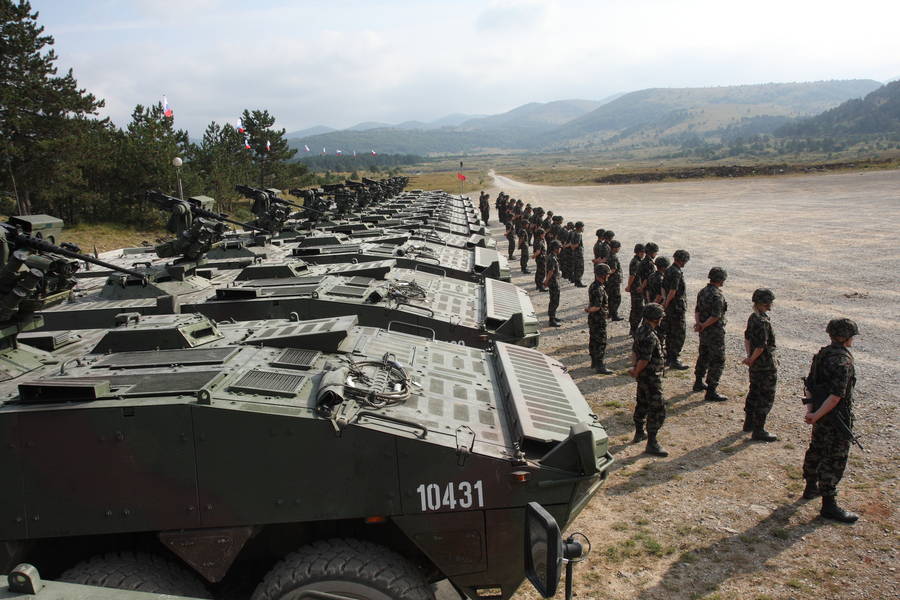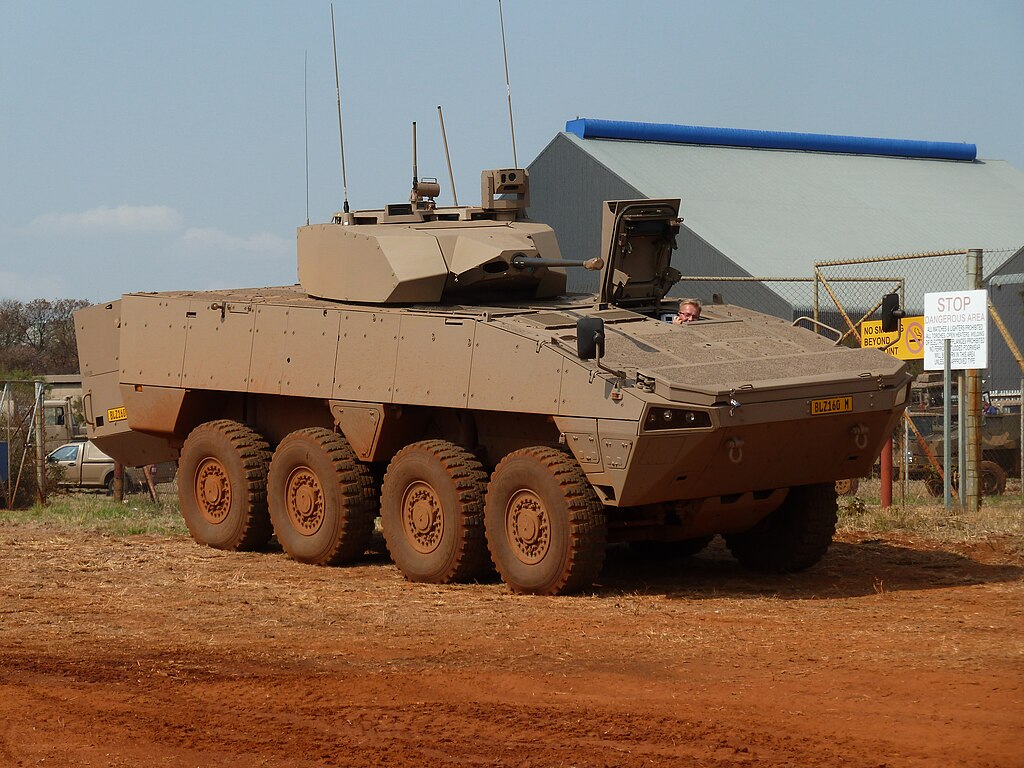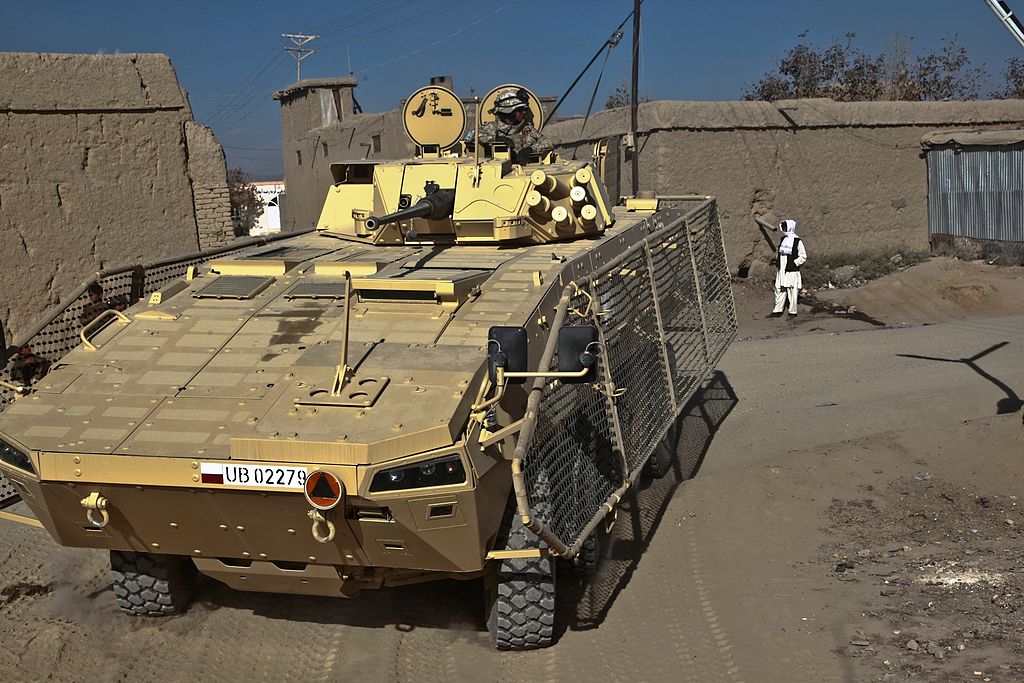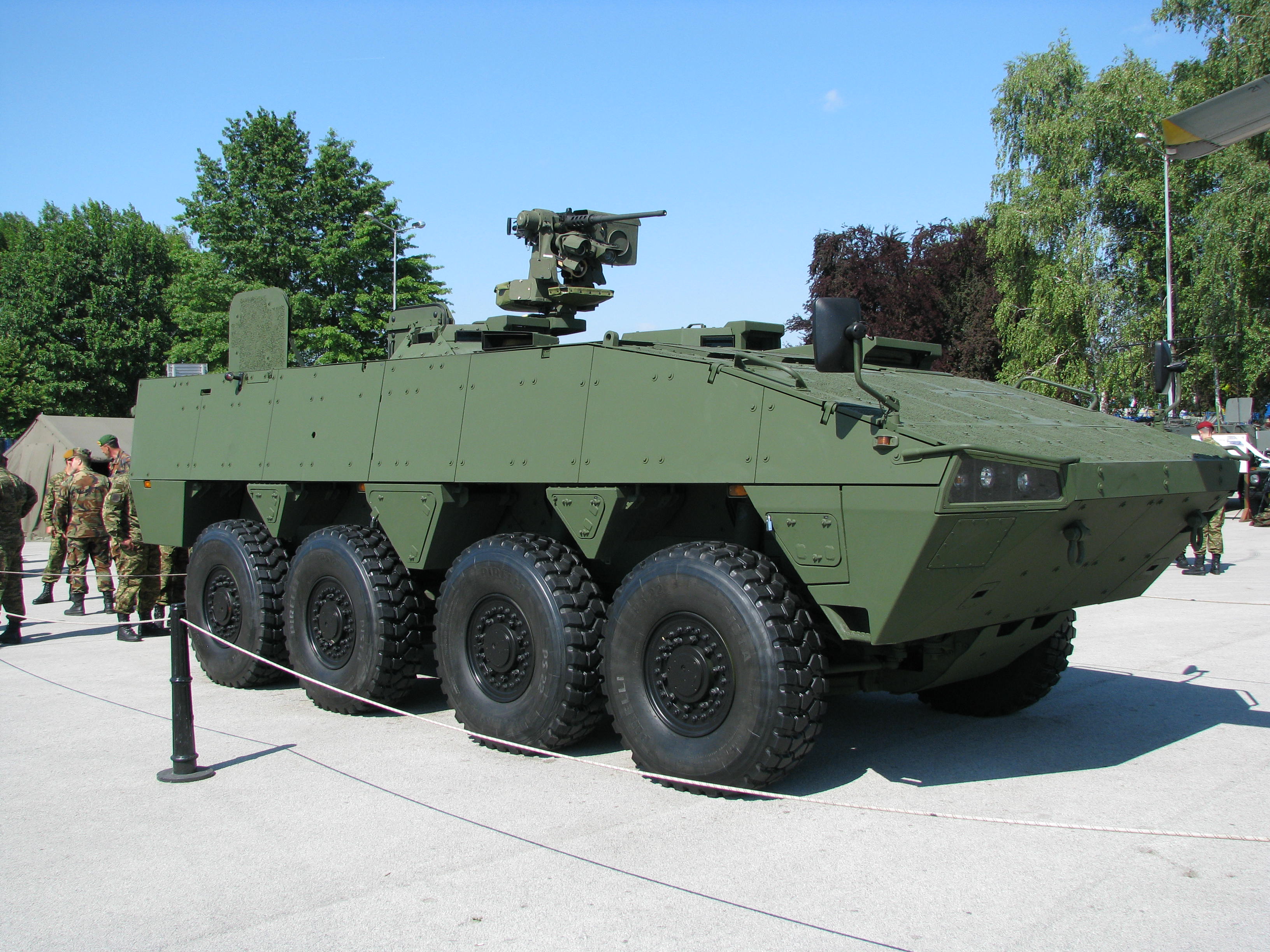
The NEMO Patria AMV is a 120mm 8x8 self-propelled mortar carrier developed, designed and manufactured by the Finnish Defense Company Patria. The development of this new mortar system began in 2005 as a private venture. The NEMO system was showed for the first time to the public in 2006, integrated on a 8x8 armoured vehicle personnel carrier AMV. By late 2007 development of NEMO was complete and a first production example will be used for extensive verification and qualification trials scheduled to take place in Finland in mid-2008. Patria Nemo is a turreted, remote-controlled 120 mm mortar system. It is an indirect fire support system, but due to its direct fire capability, it can also be used for self-defence. Patria Nemo can also fire Multiple Rounds Simultaneous Impact (MRSI) fire missions where up to 5 grenades are hitting the target simultaneously. In December 2006, the Slovenian Ministry of Defence has signed agreements with Rotis and Patria covering 135 Patria AMV 8x8 vehicles as well as 24 Patria Nemo 120 mm single-barrel mortars to the Slovenian Army. It was the first foreign customer for this vehicle. In September 2010, the NEMO 120mm mortar turret was also selected by Saudi Arabia to be mounted on the LAV II vehicles delivered by General Dynamics Land Systems - Canada as an FMS project by the US Government.
Armament
The NEMO Patria AMV is fitted with a remote-controlled 120mm mortar system which consists of the 120mm smoothbore mortar, loading device, turret, fire control system and ammunition storage. Turret traverse (360°) and weapon elevation (-3° to +85°) is all-electric with manual backup controls. The Patria NEMO can carry a total of 50 to 60 rounds of 120 mm ammunition. All standard natures of smooth bore mortar ammunition can be fired as well as smart projectiles. Loading is semi-automatic once the projectile has been put onto the loading trays. Time to fire the first projectiles upon coming to a halt is 30 seconds and time taken to come out of action is 10 seconds. According to Patria Weapon Systems a burst rate of fire of three rounds can be fired in 12 seconds with the system also capable of six MRSI (Multiple Round Simultaneous Impact) missions. Maximum range depends on projectile/charge combination but is typically over 10 km. Turret traverse and weapon elevation is all electric with manual back up controls. The turret could also be fitted with a 7.62 mm machine gun and electrically operated smoke grenade launchers if required.
Design and protection
The NEMO Patria is based on the Patria AMV 8x8 armoured vehicle personnel carrier. The layout of the NEMO Patria AMV has the power pack front right, driver front left and the whole of the remainder of the hull rear being left free for ammunition and mortar crew. The hull of the AMV is of all-welded steel construction that provides the occupants with protection from small arms fire and shell splinters. The baseline NEMO turret also provides protection from small arms fire and shell splinters but a modular ballistic protection system is available for higher levels of ballistic protection. NEMO turret also incorporates a number of signature reduction measures. The Patria NEMO has a crew of four consisting of, driver, commander and two loaders who would prepare/load ammunition trays located below the turret ring. To increase its protection up to 30 mm Armour Piercing Fin Stabilised Discarding Sabot (APFSDS) over the frontal arc, the vehicle can be fitted with a variety of passive armour packages.
Mobility
The NEMO Patria uses the same powerpack, chassis and suspension as the Patria AMV personnel carrier. The vehicle features full 8 × 8 drive with power steering on the front four wheels. Steering is power-assisted on the front two wheels. Suspension is of the hydropneumatic type with height adjustment being an option. The vehicle is motorized with a Scania turbocharged diesel engine coupled to a manual or automatic transmission with 7 forward and 1 reverse gears. The vehicle can run at a maximum road speed of 100 km/h with a maximum cruising range of 800 km. The NEMO Patria AMV can negotiate a gradient of 60%, side slopes of 30% and cross trenches up to 2 m and vertical obstacle of 0.70m maximum.
Accessories
The NEMO Patria AMV has a day/night sight for direct fire as well as the normal indirect fire capability with all of the crew in the hull under full armour protection. The Patria's indirect fire system enables the highest possible readiness for battle and crisis management. Thanks to its network of sensors and situational awareness, Patria's fire control system enables sensor-to-shooter operations. The NEMO Patria AMV is fully amphibious, being propelled in the water by two propellers which were situated one either side of the hull at the rear. Standard equipment of NEMO Patria AMV includes fire detection and suppression system, NBC system, air conditioning system, central tyre inflation system, radios, intercom and night vision equipment.
Specifications
Armament
One 120mm smoothbore mortar, in option 7.62mm machine gun
Country
Slovenia, Saudi Arabia NEMO turret mounted on LAV
Designer Company
Patria
Accessories
Day/night sight, indirect fire system, fire detection and suppression system, NBC system, air conditioning system, central tyre inflation system, radios, intercom system
Crew
4
Weight
18,000 kg
Speed
100 km/h
Range
800 km
Dimensions
Lenght: 7.3 m; Width: 2.9 m; Height: 2.4m
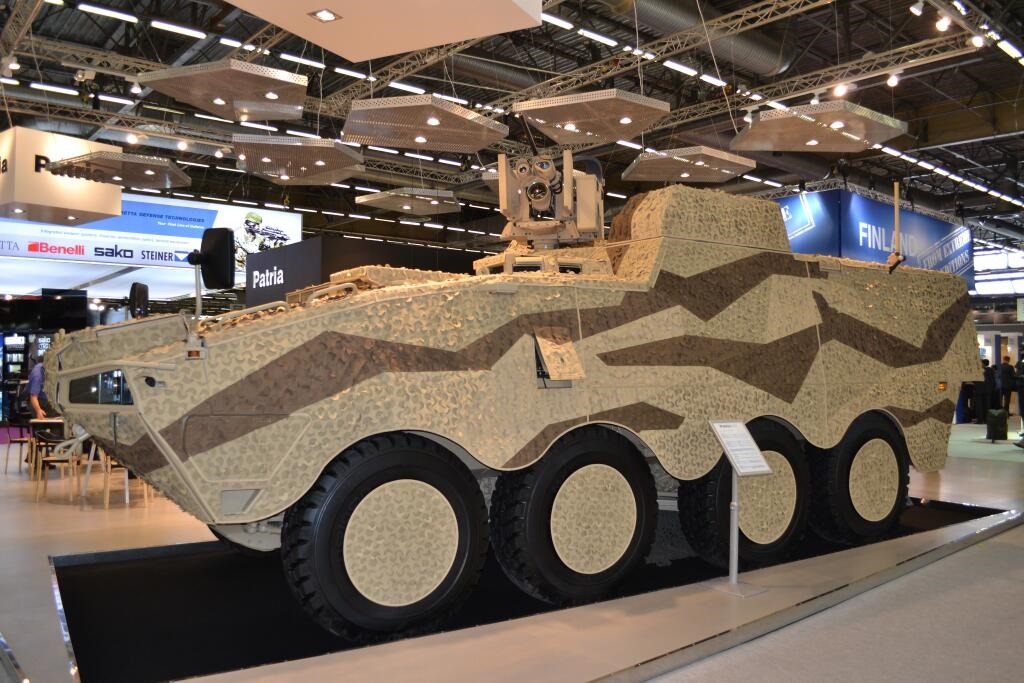
Last edited:


